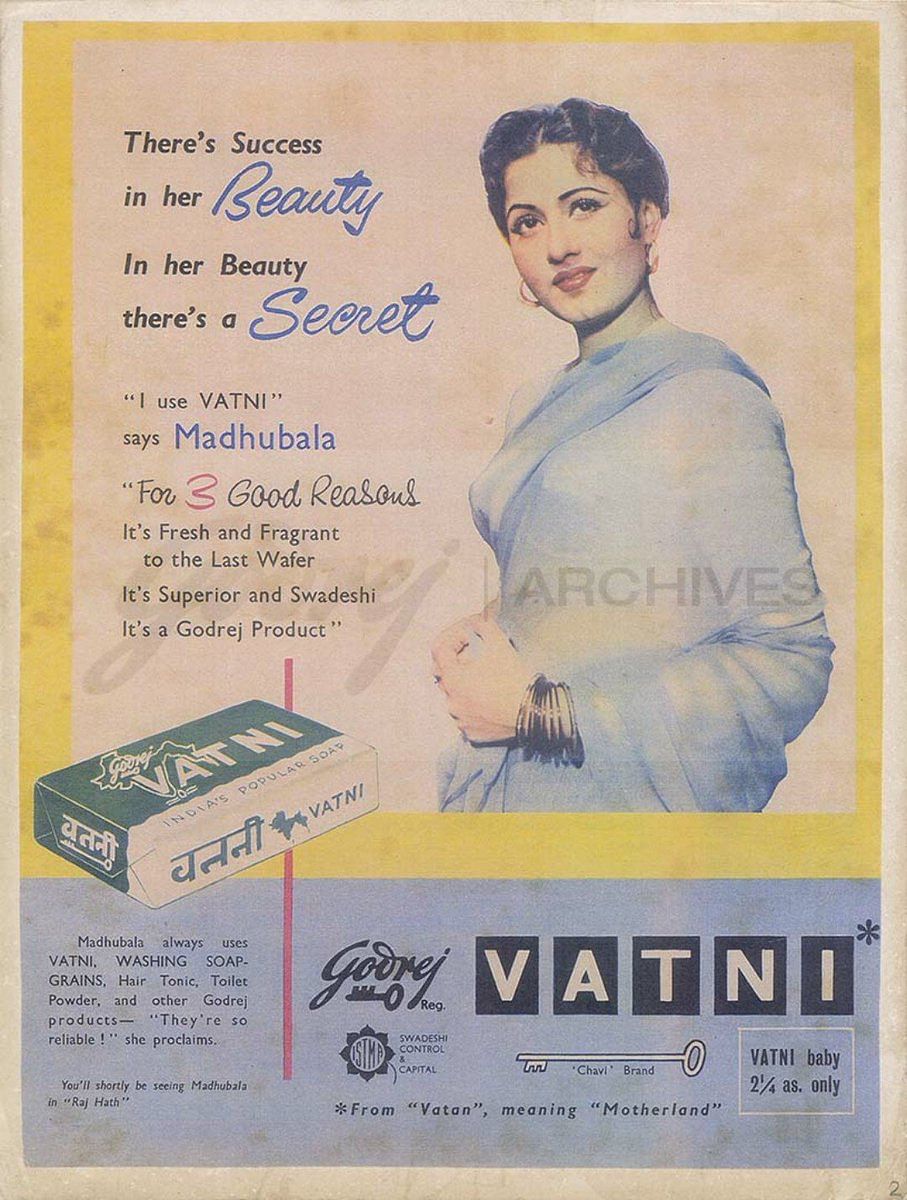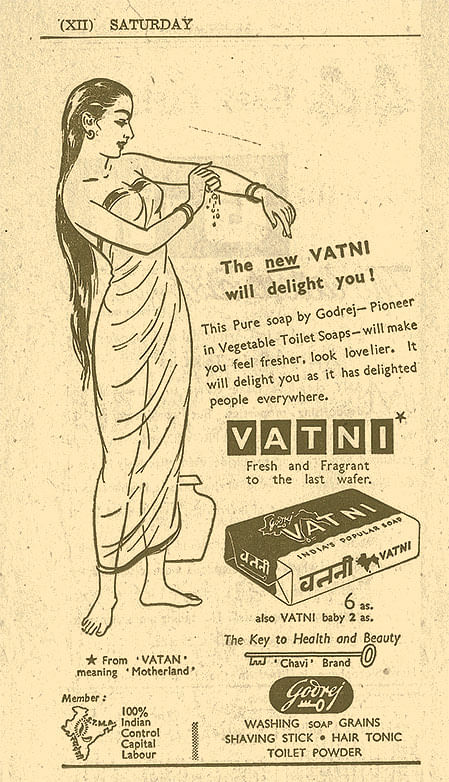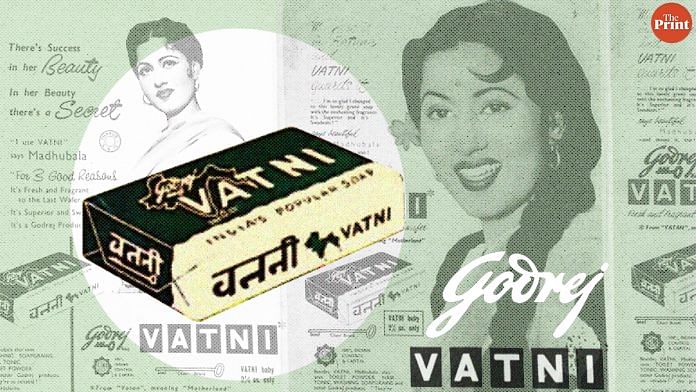A dense braid studded with a flower, dangling golden hoops, an elegant saree worn with a bindi pasted exactly at the centre of the forehead – this is how Madhubala, popularly known as Mughal-E-Azam‘s Anarkali, looked in the advertisement of a soap bar in the early 1950s.
That soap was Godrej ‘Vatni’, meaning “vatan se” — from the motherland — and it was born during India’s Swadeshi movement.
Born in “swadeshi moment”
The brand was launched in an era – in the late 1920s or early 1930s – when the fight for free India was at its peak and Indians had boycotted the goods produced by British companies in the wake of the British government’s decision to divide Bengal.
Vatni was one among the many brands that were born when ‘Made in India’ or Swadeshi movement encouraged entrepreneurs to take risks and launch products for Indians. For instance, in 1907, sharbat (drink) Rooh Afza was launched by a Unani hakeem(doctor) Hafiz Abdul Majeed under the brand name Hamdard.
Vatni witnessed the hard-won freedom of the country and went on to become the popular “swadeshi” soap used by people in independent India.
In order to encourage Indians to buy the soap bar, Godrej wrapped its product in green and white packaging with words that read: “Made in India, for Indians, by Indians.” The wrapper of the soap carried the map of undivided India for many years even after Independence and the country’s Partition.
Yesteryear actress Madhubala promoted the brand in posters and print advertisements with the punchline: “It’s superior, it’s swadeshi.”

Also read: How Godrej typewriters scripted modern Indian history
“In those days, advertisement used existing cultural values to promote the feeling of universalism. In turn, customers were prone to get influenced by the advertisement to do something for the community,” said Santosh Sood, a brand expert and former chief operating officer at an ad agency, Rediffusion Y&R.
Some of the other ads promoted Vatni as, “the national soap of unequalled value”.
“The soap was introduced sometime between 1926 and 1932. However, we do not have any record that would throw light on the year when it (the production) might have wrapped up. But we do find advertisements throughout the 1950s,” said Vrunda Pathare, chief archivist of Godrej Archives.
Also read: Crowning Glory: A soap that took on Indian sanskar with a little help from Dimple Kapadia
A search for perfect ‘Indian’ soap
It was in 1906 when the Indian National Congress, prompted by its leader Lokmanya Tilak and industrialist Ardeshir Godrej among others, promised to introduce the swadeshi element into the production of soaps.
Ardeshir Godrej, a lawyer-turned-serial entrepreneur, along with his brother Pirojsha Burjorji co-founded the Godrej & Boyce manufacturing company, which is now a $4.54 billion Indian conglomerate called Godrej Group.
A decade later, the Mysore and Madras governments set up soap factories and by 1918, Ardeshir Godrej had launched the company’s washing soap bar.
“He (Ardeshir) went on to experiment with the idea of making toilet soaps from vegetable oils instead of animal fats as was the accepted practice in most countries since the beginning of soap manufacture,” according to the archives of the company.
In 1920, the first toilet soap made from vegetable oil was ready for commercial sales. It was known as “No. 2”.
Ardeshir introduced another soap brand in 1922, named “No.1”.
While it’s not entirely clear why Ardeshir first launched a product named No.2 and then No.1, it was nevertheless quite certain that he had mastered the art of making soaps with two back-to-back stints. “Ardeshir now wanted to focus on expanding the soap business, and so left the manufacturing of locks and safes to his brother Pirojsha,” says the company on its website.

Also read: This car was the original Ambassador of Make in India
Then came another soap – Turkish Bath – in 1926. But the most popular in the line of soaps Godrej produced in those years was ‘Vatni‘ because by then, the company had become stable and learned the trick on how to brand its soap bars.
The soap was sold in the market for three aana per cake – which is less than one-fourth of a rupee.
To lure the price-conscious, independent
The company laid continuous emphasis on improving the quality and decreasing the costs.
In a process of refining brand Vatni, Godrej introduced hexachlorophene in India – a powdered agent used as a disinfectant in soaps — which eventually led to the launch of a better and modern brand, Cinthol, in 1952, which remains the company’s one of the top-selling products to date.



